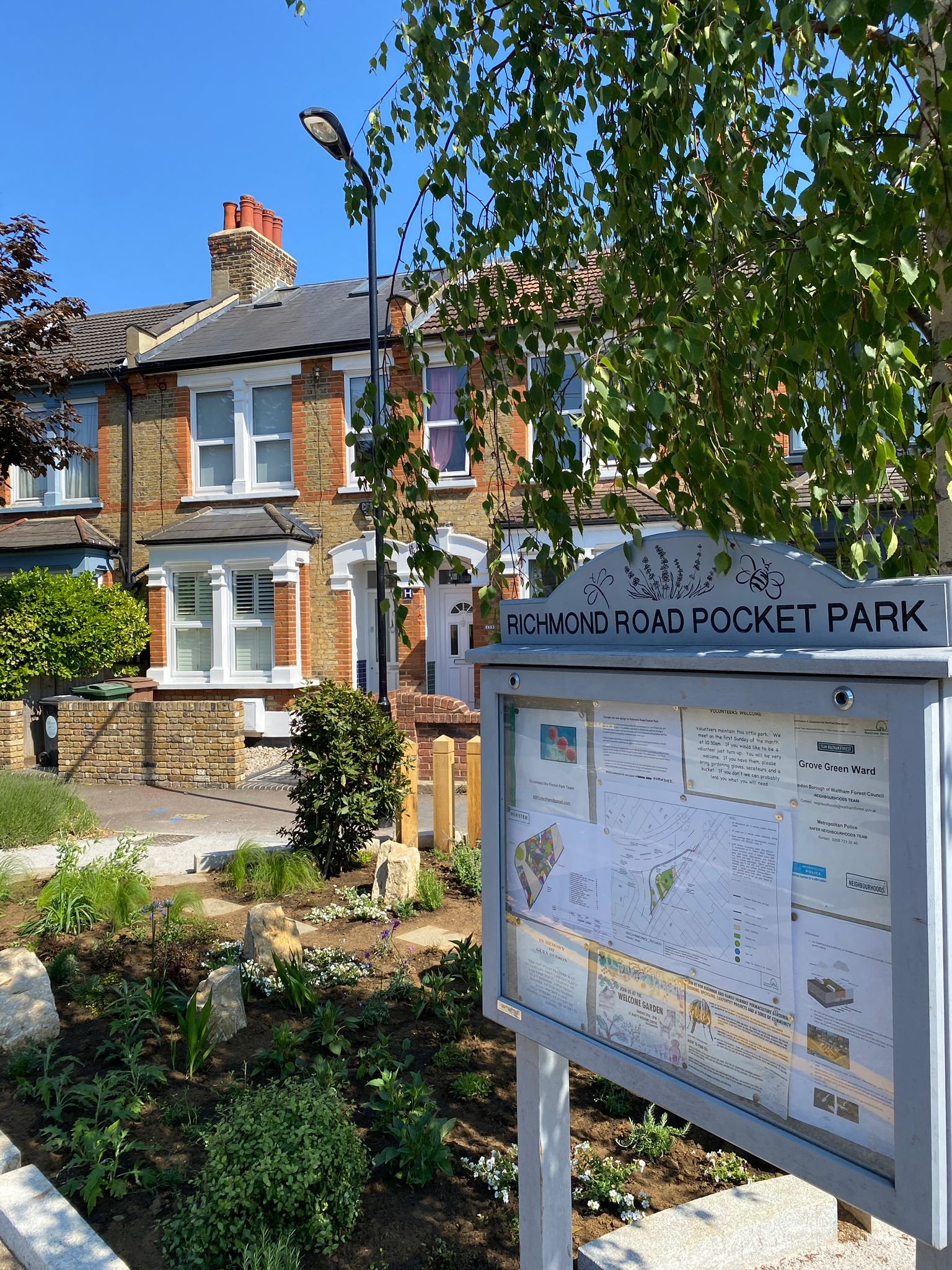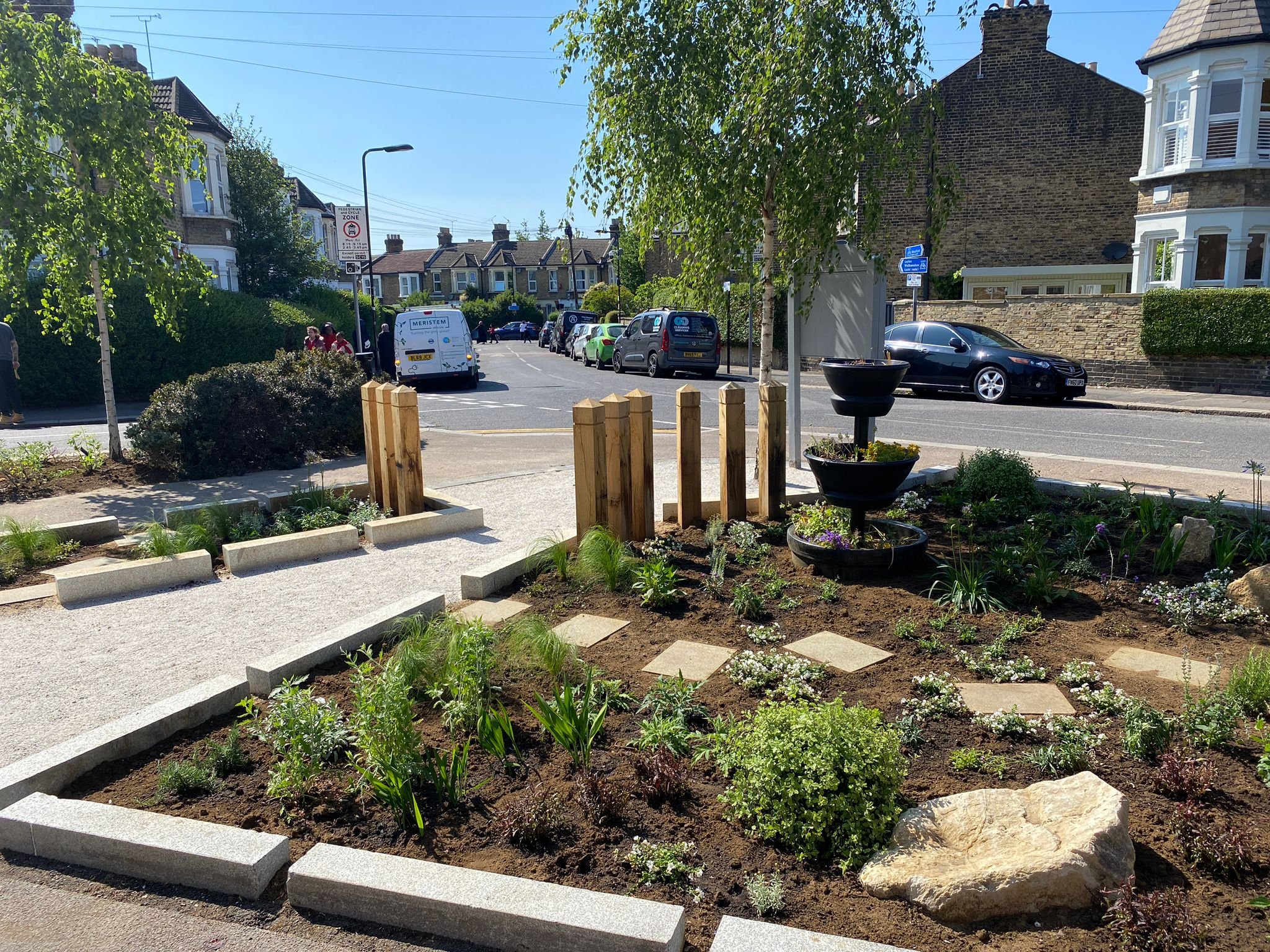Transforming Richmond Road Pocket Park with Rain Gardens
In the city area of Leytonstone, there's a clear sign of the strength of community ideas, sustainable innovation, and urban greening. The Richmond Road pocket park, a once-underutilised space, stands as an example of what can be achieved when love for nature meets good building design.
Back in 2016, seven parking spaces were removed from Richmond Road in an effort to introduce more green spaces to the area. With determination from local residents, and help from the London Borough of Waltham Forest, Richmond Road pocket park was finally completed in 2017. Since then, the local residents have persevered with the maintenance of the pocket park, utilising a water butt provided by the council, helping it through the hot dry summers we've recently seen. Despite the weather, their hard work was recognised when they received two Awards in the London in Bloom competition.
In recent years, however, the London Borough of Waltham Forest has been highlighting certain locations in the borough to fund the latest green initiatives, tackling issues such as flooding. With the wooden structure of the pocket park beginning to show some signs of wear and tear, the decision was made to remove the pocket park and install a Sustainable Drainage System (SuDS) in its place.
Through the winter of 2022/2023, the old structure was removed, with as many plants rehomed as possible. In line with the commitment to community collaboration, residents were consulted regarding plant species and key features they wished to retain in the rain garden. As a result, aesthetic timber posts were installed on the edges, reminiscent of trees or planter sides. These not only honoured the previous structure but also served as a play area for the neighbourhood's children.
In addition, stepping stones were embedded, allowing residents to traverse the area, thereby preserving the element of immersion and involvement that the pocket park initially offered. These stones were not only aesthetic but also functional, aiding the maintenance team in accessing the rain garden without trampling the soil.
To target problems like flooding, the choice was made to replace the current pocket park with a Sustainable Drainage System (SuDS) - a Rain Garden.
By late spring, the transformation was complete. The newly established rain garden spanned a total of 38m2 and showcased a rich diversity of plant species, including the striking Agapanthus and the vibrant Echinacea. These plants, chosen for their biophilic design benefits, offered a feast of colours and were an attraction for crucial pollinators.
Gratefully, the story did not end there. The community, always supportive, stepped in to assist with watering during the initial months of summer, ensuring the garden's survival and growth.
This case study emphasises the importance of urban greening and the transforming spaces it can create, enhancing biodiversity and community involvement. We're really pleased to have been part of this latest chapter for the Richmond Road pocket park and look forward to seeing it flourish and bloom once more.
Frequently Asked Questions:
1. Why are pocket parks essential for urban spaces?
In the midst of concrete jungles, pocket parks emerge as vital green oases. They offer urban inhabitants a respite from the hustle and bustle, providing a peaceful space to reconnect with nature. Besides aesthetic appeal, pocket parks are instrumental in combating the adverse effects of urbanisation, like air pollution and heat islands. They also serve as community hubs, fostering social interactions and community events. Richmond Road Pocket Park, for instance, stands out as a brilliant illustration of how these compact green spaces can rejuvenate an urban setting, turning once-neglected spaces into community assets.
2. How do rain gardens and SuDS help in stormwater management?
Rain gardens and SuDS play a crucial role in addressing urban stormwater challenges. By design, they act as basins that capture, slow down, and filter stormwater, preventing direct runoff into sewers or waterways. This helps alleviate flooding risks, especially during heavy downpours. Furthermore, they aid in groundwater recharge by allowing water to percolate back into the soil. Richmond Road Pocket Park is an example of this innovative approach, where the integration of a rain garden effectively manages stormwater, reducing the strain on the conventional drainage system while adding ecological value to the area.
3. What are the benefits of community planting?
Community planting is more than just greening an area: it's about uniting people for a common cause. When communities come together to plant, they create shared spaces that foster a sense of pride and collective ownership. This not only enhances the beauty and biodiversity of the area but also promotes community bonding and cooperation. Additionally, community planting events are educational, allowing participants to learn more about local flora, sustainable practices, and the importance of urban ecology. Richmond Road Pocket Park exemplifies these benefits, where resident involvement has been instrumental in shaping its success.
4. How does urban greening contribute to combatting climate change?
Urban greening is a potent weapon against the escalating threats of climate change. Green spaces, including trees and vegetation, act as carbon sinks, absorbing and storing harmful CO2 emissions. They also combat the urban heat island effect by providing shade and cooling through evapotranspiration. Moreover, green spaces play a role in filtering air pollutants and improving overall air quality. These combined benefits not only make cities more livable but also contribute to global efforts to mitigate the adverse effects of climate change. Projects like Richmond Road Pocket Park showcase the transformative power of urban greening, highlighting its crucial role in creating sustainable and resilient urban environments.








